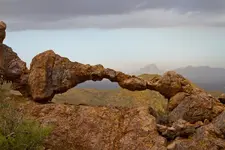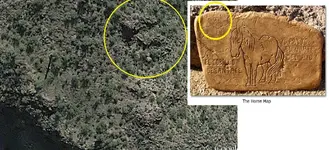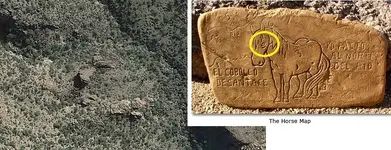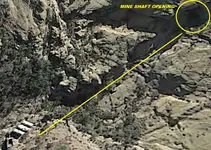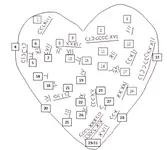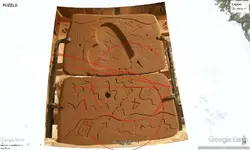markmar
Silver Member
- Joined
- Oct 17, 2012
- Messages
- 4,302
- Reaction score
- 6,536
- Golden Thread
- 0
- Primary Interest:
- All Treasure Hunting
The smooth, wavy line at the very top of the UTS is the profile of the los some(r)o montana as described on one of the Stone Crosses, and is the Fornix or "arch" on the CP.
In contrast, the line above the RIO on the upper left of the horse side of the H/P stone is squiggly. The letter R is furthermore not similar to the one on the UTS. That one of the legs of the R is long and points to the horse itself, suggests that either crossing the river or following it leads to the horse. But which river? And how? And what do the five dots represent? And the two circles and buried symbol? These are some of the questions I continue to ruminate on.
And if you have been paying attention to anything posted on this board, there is no horse for me to "find." It was already found, a long time ago. And there is absolutely no question at this point, that it is the same horse as the one depicted on the Stone Maps.
Maybe you are the person who doesn't pay attention to what is posted about the stone maps. Or maybe you don't want because you are vested in a bad theory which leads to nowhere.
You write the real horse was found but your writings say something else: " But which river? And how? And what do the five dots represent? And the two circles and buried symbol? These are some of the questions I continue to ruminate on."




